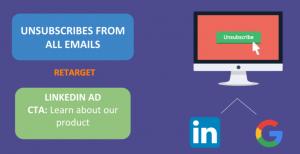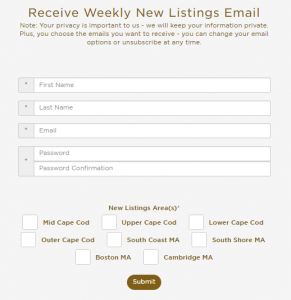
Your customers are smart. They know marketers have a stake in the claims you make about a company’s products. If they’re ever going to trust what you have to say, you must give them more than your own word.
That’s what makes social proof so powerful. A third party—whether it’s a customer, industry expert or online influencer—doesn’t have a personal interest in talking up your brand. If they say they like it, it’s because they mean it. That’s persuasive, and the research proves it: 92 percent of customers trust earned media more than ads.
For that reason, marketers and advertisers use social proof all the time. When you start looking for it, you’ll see it everywhere. Web pages that tout the number of customers, visitors and followers as proof of the brand’s influence (see HubSpot’s version below) are social proof, as are testimonials from happy customers on business websites (like Kuno’s below). And most B2B brands you encounter will be using it in the form of case studies as well. These familiar forms of social proof are worth using, but there’s no reason to stop there.


Less Obvious Ways to Put Social Proof to Work in Your Marketing
1. Cultivate relationships with influencers.
Celebrity endorsements are a form of social proof often employed by big B2C brands, but for companies that sell B2B products, seeking out a famous athlete or movie star to help promote your product may not be the best use of funds.
For the B2B audience, the endorsement that really matters is that of industry experts and influencers. And generally speaking, an industry influencer is likely to be much more accessible than, say, George Clooney.
To identify your industry influencers, start by looking at the blogs you read and people you pay attention to on social media. As a member of your industry, you probably already follow some of the top influencers in the space. Add to your list by searching for influencers by keyword in BuzzSumo. You can get a list of the websites and Twitter handles that have the most influence based on factors like followers and page authority.

Once you have your list, work on cultivating a relationship with those influencers. Share their posts, reply to comments they make on social media, and, little by little, work to get on their radar. That way, by the time you get to the point of asking them to get involved with your brand, they already have a reason to know and trust you.
If you do reach that point (and don’t rush it), then having a relationship with influencers can lead to helpful collaborations and other forms of social proof like:
- You quoting them in a blog post and vice versa
- Them mentioning your brand in social media updates
- A guest post from them on your website
- Guesting on each others’ webinars
- Interviewing them on your podcast
- A quote from them about the product you can put on your website

Influencer marketing requires playing the long game, but the power an influential industry expert can have in expanding trust in your brand to their audience is hard to oversell.
2. Enable and encourage customer communities.
While influencers offer the value of wide reach, your current customers have direct experience using your product to solve their problems. For some prospects, the opinion of a customer who’s similar to them will be the most important indicator of how likely they’ll be to use your products as well.
Developing customer communities can accomplish a number of useful things:
- They help your current customers get more out of your products by learning best practices and tips from one another.
- They enable you to identify the biggest proponents of your product.
- High participation in customer communities shows your prospects your current clients are committed to the product.
- The customer community can be viewed and touted as a value add to potential customers.
Customer communities can take a number of forms. You can set up community forums, like those Adobe offers.

They can be based on in-person events like user group meetups or a conference, like the ones HubSpot users come together for. You could even do something more fun and creative like an awards ceremony for the customers that use your product in the most effective ways, along the lines of the Markie Awards. All of these options give customers a way to hear from other customers and prospects an opportunity to see how committed your current customers are.
3. Bring customers into the marketing process.
Good products inevitably inspire enthusiastic customers. If you can identify those enthusiastic customers—and if you don’t have a customer community to help you spot them, your customer service team can probably help—you can recruit them to be involved in your marketing efforts.
Invite them to join you on a webinar. Ask them to talk about how they use your product in a short video for your website. Or provide them with materials that make it easy for them to provide educational information to their clients or do presentations about your product at events in their community, like Quickbooks does for the clients in their ProAdvisors program.

These types of collaborations can help raise their profile as an expert in the industry while also helping to promote your product, so they’re good for everybody. And having a current customer out in the world talking about how useful they find your product sends a powerful message to other businesses in your target demographic.
While all the familiar methods of using social proof in marketing still have their place, figuring out some additional, less common ways to put the concept to use can pay off. The more opportunities your prospects have to be exposed to influencers and customers talking about your brand and product, the more you earn their trust. That makes all the inbound marketing you do more powerful and effective.
Digital & Social Articles on Business 2 Community
(51)








